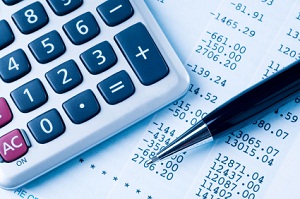GROUPON MATH
 Groupon is advertising. If you don’t need or believe in advertising, there is no reason to look at this. It costs money. Instead of writing a check for an ad, you are choosing to lose money on sales. This can drive someone tracking profit margins crazy. And what if the coupon customers don’t spend more than the coupon?
Groupon is advertising. If you don’t need or believe in advertising, there is no reason to look at this. It costs money. Instead of writing a check for an ad, you are choosing to lose money on sales. This can drive someone tracking profit margins crazy. And what if the coupon customers don’t spend more than the coupon?
Before you jump on board this social coupon craze you need to sit down and do the math. Math is cold and unemotional and eye-opening. The only problem with doing the math first is that you will have to guess at many of the numbers. Once you try your first social coupon campaign though, you’ll be able to have a more accurate calculation. But until then, just try and be realistic in your expectations and be prepaid once the coupon runs. Here is a list of eight key calculations to consider and help you determine whether social couponing is worth your investment:
1. What is the additional cost for one of these new customers? If you are giving boat tours and have empty seats, your incremental costs for an additional customer are next to nothing. If you are selling clothes, your incremental costs might be 50 percent of the sale price. Food might be 40 percent. In any case, don’t include fixed costs that you would be incurring any way.
2. What is the average sales amount? If the coupon is for $75, will the customers spend more than that? Sometimes it may seem like coupon customers aren’t spending more than the value of the coupon. Keep track of all your sales. Some won’t spend more, but others will. Knowing your average sales is important.
3. How many coupons will be redeemed? You’ll have to guess at this number, but Groupon has a high redemption rate. Plan on 85-90 percent.
4. How many existing customers are using coupons? Ask the coupon users if this is their first time at your place of business. If they already are customers, then they aren’t the new customers you’re hoping for. Just provide them with same quality service so they keep coming back. The percentage of new/old customers will vary based on the size of your target area, how long you’ve been in business, and the type of business you have.
5. Those new customers may be the same customers. New customers may buy multiple coupons. Don’t just expect the number sold equals the number of new customers.
6. How many new customers will really come back again? It is likely that a good percentage won’t come back. What that percentage will be though is hard to say. Depending on your expectations, if 10 percent become regular customers, that may be a good or bad number.
7. What is the advertising value of having your business promoted on Groupon? Even if they all don’t buy coupons, your business is still getting a ton of exposure.
8. How much does it normally cost you to acquire a customer through advertising? Everything is relative.
Best marketing ever? Worst marketing ever? It all depends on a few little numbers. Do the math and follow these social coupon tips. Here is the big difference between traditional advertising and Groupon: Traditional advertising requires spending some money and knowing that it can be lost if the ad doesn’t work. With Groupon, you spend no money up front but you mess with your formula for making money. You can win big and you can lose big.
